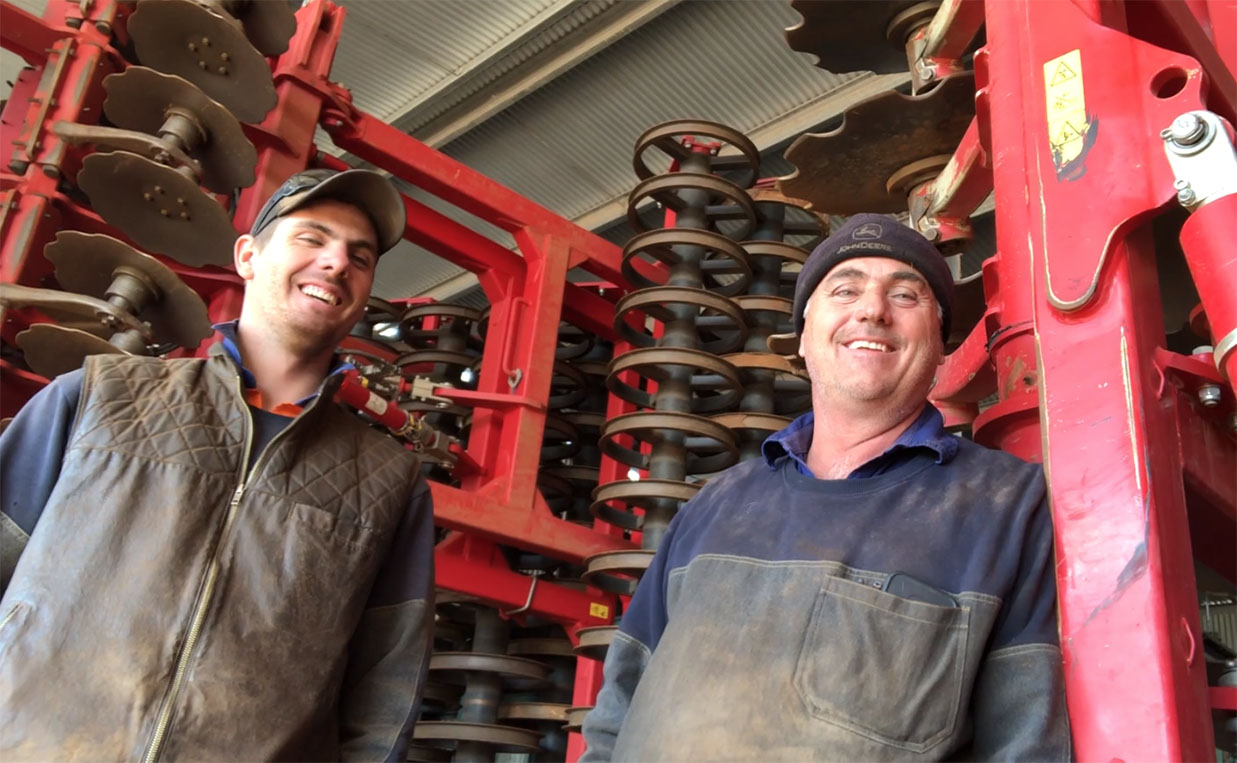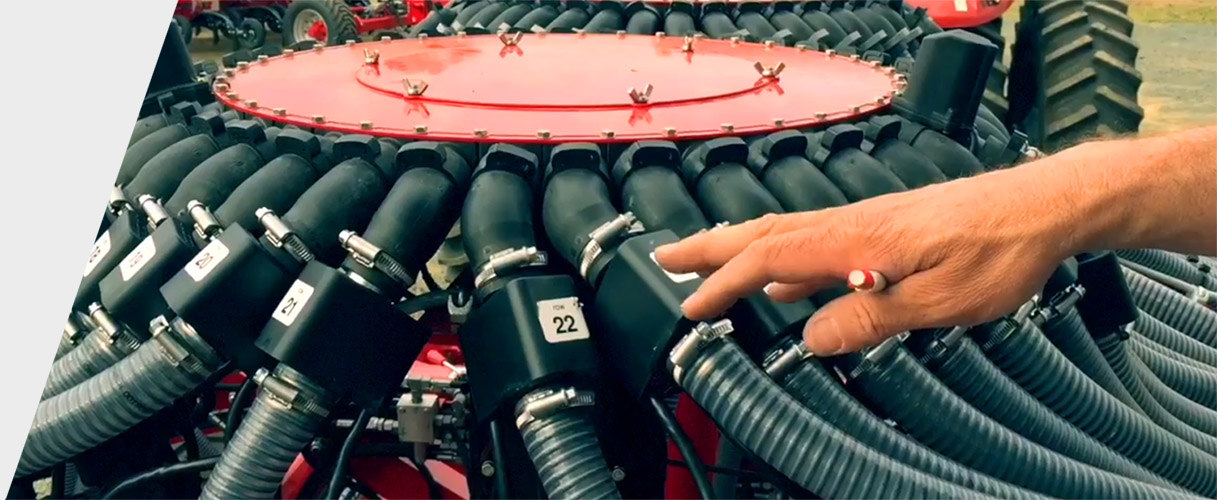| Okay, we’re here with Grant and Brenton Byrne from Byrne Partners at Peak Hill, just got a couple of questions regarding their Horsch Tiger. They’ve got a 6MT here, the machine is about three and a half years old now.
Grant, just firstly can you give us a bit of a rundown on your farming operation, what crops you are growing and what you’re doing with the family business? So we’re 20 KM west of Peak Hill here we’re on six and a half thousand hectares dryland broadacre farming. We crop wheat, canola, barley, chickpeas, dabble in a bit of sunflower, sorghum, corn when there’s moisture and we try and grow a crop, trying to make money out of it. We originally were Merino, full Merino with the wool boom and the decline of the wool industry years ago we’ve got out of that, so now we’re just dryland cropping.Good stuff! So as I said, you’ve had the Tiger here for three and a half years, what sort of hectares you’ve done in that time mate? I think including the country that we’ve taken the Machine away into, we’ve done four to five thousand hectares. And what predominant depth are you running this machine at?And what sort of depth We’re running it between three and four hundred millimetres, predominantly 350mm, that’s in there and it stays there. And your soil types here predominantly would be what? Predominantly our trouble soils are very hard setting, slating clays, very heavy perfect country to make bricks out of. So have you seen any evidence that the soil structure is changing after using the Tiger, and have you seen any benefit by using the Tiger? I think the big advantage that we’ve got out of it so far is that it moves the organic matter from on top of the soil to depth, where the microbes and things can break it down quicker and easier and we don’t have the stubble loadings that are causing us problems. We’ve had an instance where we had a heavy barley crop in on Bunnaroo and a couple of bog holes and we were only playing with it when it was new, and I went down after we’d done it and tried to find the stubble and we couldn’t actually find any stubble in the headland where we had this problem. We dug down with a shovel and it had actually laid the stubble in a mole drain as it was probably 150 MLS down exactly what we wanted to do was to move that organic matter on the heavier nutrition soil from the top surface down to depth so that particularly when it’s dry, when the roots are growing down to that moisture depth there is nutrition there. We’re feeling as though we’re getting a nutrition band in the top 75 mm in our cropping country and as you know the phosphorous will not move. So the only way we can get that down is to incorporate into depth, then you only probably have to do it once every five or six years but enough to get some organic matter down there so we’ll get more root growth, and we’ll get more with more organic matter, we’re going to get more worms we’re going to get better biology, yeah so that’s sort of where we’re going with it. Okay so what speed, are you running this at. Especially at that depth. About 8k’s, Four-point eight to five hectares an hour. And fuel usage per hour, What do you reckon? It depends on what you drag it into. It varies really on the soil structure. We were in a paddock the other day that ran from forty-six litres to 90 litres, yeah so in the heavy compacted sodic and waterlogged end, it was using everything we had. and then by the time we got to the other end, where we’re running at 1500 revs and 10th gear and just rolling along. Has it been an easy machine to set up and use ? and as you know three-meter transport is a big advantage for getting around roads, but when you get it to the field, is it easy to set up and go, or do you just leave it? It’s Set-and-forget for us, once we get it set up at the depth we want, we just drag it at that depth. With the disc’s the biggest thing will be whether we’re getting any movement in the discs, if it’s a bit tight or a bit dry and the discs start the chatter, we’ll actually put some shims in and take some weight off the discs, because that seems to be the thing that pulls us up is, how much weight we put in the discs and we really make it plough. The point of these interviews is to talk to farmers that have had the machines in the field for quite a while and just to see how the reliability is of the Machine, how its performed, are you Honestly, we had a couple of instances with a few bolts breaking but I can’t remember any at any stage that it’s let us down. We drive into And the engineering quality? … Ah well, Horsch is Horsch. It’s the Rolls-Royce if you want something So in finishing, would you recommend the Tiger to other farmers and if so, why would you? Well, I would buy another one and run two of them, that’s how impressed we are with it. I think the fact that we can set it up as a deep ripper, we lift the top ring packer on the back and we lift the discs up and just run as tynes, or we can put the discs right in and lift the tines out so we’re using it as a plough. So we’ve got three machines in one, and we can if we want to, set it to do exactly the job we want and we know that it’s going to work and we know that things aren’t going to fall off it. I would definitely recommend the Tiger, if anyone is even contemplating buying a plough, this is what I’d buy. So as a tool in the shed would how would you rate this one? I think most tools you have do one job, this one’s doing three. so its a multi tool. |




